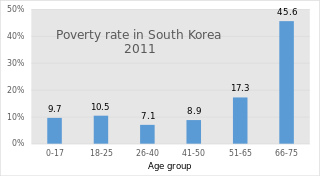
In the United States, Social Security is the commonly used term for the federal Old-Age, Survivors, and Disability Insurance (OASDI) program and is administered by the Social Security Administration (SSA). The original Social Security Act was enacted in 1935, and the current version of the Act, as amended, encompasses several social welfare and social insurance programs.

The Social Security Act of 1935 is a law enacted by the 74th United States Congress and signed into law by US President Franklin D. Roosevelt. The law created the Social Security program as well as insurance against unemployment. The law was part of Roosevelt's New Deal domestic program.

Welfare, or commonly social welfare, is a type of government support intended to ensure that members of a society can meet basic human needs such as food and shelter. Social security may either be synonymous with welfare, or refer specifically to social insurance programs which provide support only to those who have previously contributed, as opposed to social assistance programs which provide support on the basis of need alone. The International Labour Organization defines social security as covering support for those in old age, support for the maintenance of children, medical treatment, parental and sick leave, unemployment and disability benefits, and support for sufferers of occupational injury.
United States v. Butler, 297 U.S. 1 (1936), is a U.S. Supreme Court case that held that the U.S. Congress has not only the power to lay taxes to the level necessary to carry out its other powers enumerated in Article I of the U.S. Constitution, but also a broad authority to tax and spend for the "general welfare" of the United States. The decision itself concerned whether the processing taxes instituted by the 1933 Agricultural Adjustment Act were constitutional.

The U.S. Railroad Retirement Board (RRB) is an independent agency in the executive branch of the United States government created in 1935 to administer a social insurance program providing retirement benefits to the country's railroad workers.
Social welfare, assistance for the ill or otherwise disabled and the old, has long been provided in Japan by both the government and private companies. Beginning in the 1920s, the Japanese government enacted a series of welfare programs, based mainly on European models, to provide medical care and financial support. During the post-war period, a comprehensive system of social security was gradually established.
The Taxing and Spending Clause, Article I, Section 8, Clause 1 of the United States Constitution, grants the federal government of the United States its power of taxation. While authorizing Congress to levy taxes, this clause permits the levying of taxes for two purposes only: to pay the debts of the United States, and to provide for the common defense and general welfare of the United States. Taken together, these purposes have traditionally been held to imply and to constitute the federal government's taxing and spending power. The text of the constitution reads thus:
The Congress shall have Power To lay and collect Taxes, Duties, Imposts and Excises, to pay the Debts and provide for the common Defence and general Welfare of the United States; but all Duties, Imposts and Excises shall be uniform throughout the United States;
Steward Machine Company v. Davis, 301 U.S. 548 (1937), was a case in which the U.S. Supreme Court upheld the unemployment compensation provisions of the Social Security Act of 1935, which established the federal taxing structure that was designed to induce states to adopt laws for funding and payment of unemployment compensation. The decision signaled the Court's acceptance of a broad interpretation of Congressional power to influence state laws.
Social security, in Australia, refers to a system of social welfare payments provided by Australian Government to eligible Australian citizens, permanent residents, and limited international visitors. These payments are almost always administered by Centrelink, a program of Services Australia. In Australia, most payments are means tested.
The Dirty Dozen is a Cato Institute book, written by Robert A. Levy and William Mellor and released in May 2008, about twelve U.S. Supreme Court decisions that were viewed as greatly undermining individual freedom by expanding the power of government. The book was the subject of many reviews and much press. It was released around the time that Levy gained media attention as the organizer and financier behind District of Columbia v. Heller.

Social programs in the United States are programs designed to ensure that the basic needs of the American population are met. Federal and state social programs include cash assistance, health insurance, food assistance, housing subsidies, energy and utilities subsidies, and education and childcare assistance. Similar benefits are sometimes provided by the private sector either through policy mandates or on a voluntary basis. Employer-sponsored health insurance is an example of this.

Social security or welfare in Finland is very comprehensive compared to what almost all other countries provide. In the late 1980s, Finland had one of the world's most advanced welfare systems, which guaranteed decent living conditions to all Finns. Created almost entirely during the first three decades after World War II, the social security system was an outgrowth of the traditional Nordic belief that the state is not inherently hostile to the well-being of its citizens and can intervene benevolently on their behalf. According to some social historians, the basis of this belief was a relatively benign history that had allowed the gradual emergence of a free and independent peasantry in the Nordic countries and had curtailed the dominance of the nobility and the subsequent formation of a powerful right wing. Finland's history was harsher than the histories of the other Nordic countries but didn't prevent the country from following their path of social development.
A general welfare clause is a section that appears in many constitutions and in some charters and statutes that allows that the governing body empowered by the document to enact laws to promote the general welfare of the people, which is sometimes worded as the public welfare. In some countries, it has been used as a basis for legislation promoting the health, safety, morals, and well-being of the people governed by it.
The Social Security Act 1938 is a New Zealand Act of Parliament concerning unemployment insurance which established New Zealand as a welfare state. This act is important in the history of social welfare, as it established the first ever social security system in the world.

A limited form of the Social Security program began as a measure to implement "social insurance" during the Great Depression of the 1930s, when poverty rates among senior citizens exceeded 50 percent.

United States v. Silk, 331 U.S. 704 (1947), was a United States Supreme Court case regarding US labor law. The case concerned the scope of protection for employees under the Social Security Act 1935.

South Korea's pension scheme was introduced relatively recently, compared to other democratic nations. Half of the country's population aged 65 and over lives in relative poverty, or nearly four times the 13% average for member countries of the Organisation for Economic Co-operation and Development (OECD). This makes old age poverty an urgent social problem. Public social spending by general government is half the OECD average, and is the lowest as a percentage of GDP among OECD member countries.
Davis v. Michigan, 489 U.S. 803 (1989), is a case in the Supreme Court of the United States holding that states may not tax federal pensions if they exempt their own state pensions from taxation. In the 1930s, the federal and state governments began to charge income tax on salaries paid to each other's employees. However, reciprocal treatment was required under the doctrine of intergovernmental immunity. The Court's ruling extended the reciprocity to pensions, since they are a form of deferred compensation for services previously rendered by an employee.
The New Deal often encountered heavy criticism, and had many constitutional challenges.









